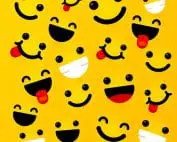Leadership & Influence: The art of Leadership
Even though some people are born leaders, anyone can learn and develop influence and leadership skills. Sometimes, a situation may force you into a leadership role and you’ll exhibit abilities you didn’t know you had. Likewise, the art of influence is something you can grow as you develop more confidence. Leadership and influence are soft skills you hone through experience and practice. The more you do it, the more influential leader you will be.
0 1
Effective Business Leadership Requires Engaging People
(1) Can you be a leader if no one follows you? Effective leadership motivates and inspires people. When we think of great leaders we often think of historical figures such as Alexander the Great, Queen Victoria, or Abraham Lincoln, and we think of the leadership qualities they used to impact people.
In business, your ability to lead is directly tied to your ability to engage people, especially your employees or direct reports. It’s concerning then that the Harvard Business Review reports only 30% of American employees feel engaged. Their lack of enthusiasm for their jobs costs the American economy $550 billion a year in productivity losses.
There is worldwide confusion about how to be an effective leader. A recent global survey of employees reported 82% don’t trust their bosses. Leadership cannot effectively function if it is not trusted. The first step of business leadership is getting employees engaged. You cannot influence or motivate employees who aren’t listening to you.
What makes an effective business leader?
According to Forbes, there are eleven core traits of effective leadership that you should aspire to learn and develop throughout your career and life.
- Self-managing – You can’t manage others if you can’t manage yourself.
- Acting strategically – Leaders are curious about their company and industry, have a flexible mindset, are future-thinking, and maintain a positive outlook.
- Good communicator – Powerful leaders know when to talk and when to listen.
- Be Accountable – Effective leaders take responsibility for mistakes.
- Set clear goals and are persistent – People with clear goals who pursue them doggedly are seen as more charismatic.
- Future Vision – Exceptional leaders have a keen eye for where their company and industry are headed.
- Managing Complexity – Good leaders solve problems and remain calm.
- Foster Creativity and Innovation – Leaders brave enough to take chances themselves will inspire others to think outside the box.
- Forms Strong Relationships – Leaders build a following in the company but are adept networkers who establish strategic relationships across channels.
Always Learning – Effective leaders are curious but they also thinking critically, deal well with ambiguity, and demonstrate social and emotional intelligence.
Top communication skills for leaders
Harvard Business School lists three fundamental communication skills for executive leadership:
- Ability to Adapt Communication Style – Different communication styles are the most frequently cited cause of poor communication, according to the Economist Intelligence Unit. Know who you’re talking to.
- Active Listening – Actively engage in conversations with employees, posing questions, asking for details, and taking notes.
- Transparency – Speak openly about the company’s goals, opportunities, and challenges.
- Clarity – Be clear to prevent communication about priorities.
- Ability to Ask Open-Ended Questions – Use TED
- “Tell me more.”
- “Explain what you mean.”
- “Define that term or concept for me.”
- Empathy – Acknowledge and understand employee’s feelings.
- Open Body Language – Be aware of your posture and how your non-verbal cues may be interpreted.
- Receiving and Implementing Feedback – Requesting feedback is a tool for gaining insight and growing as a leader while building trust with your team.
“The pessimist complains about the wind. The optimist expects it to change. The leader adjusts the sails.” – John Maxwell
0 2
What Does a Good Leader Look Like?
(2)The best way to gauge a business leader is by the performance of their team or employees. Studies show capable leaders are usually sociable. They talk to their team members. They are also curious and ask questions about people, motivations, and opinions. Typically, they are well-adjusted, confident people with high emotional intelligence who can interact with direct reports without flexing their ego. The best leaders are also seen by their team as honest and fair. Honesty and fairness engender positive employee morale.
While an authoritarian approach to leadership may provide the illusion of respect, it can negatively impact corporate culture. Strong leadership empowers team members and will encourage employees to buy into the company vision. Leaders exhibiting high emotional intelligence will earn more respect. A leader understands employees have lives outside of work. You can discover ways to connect with employees and colleagues with our course on Emotional Intelligence.
Traits of transformational leadership:
- Ambition
- Competence
- Emotional intelligence
- Communication skills
- Ability to influence
- Imagination
- Intelligence or IQ
- Strong Soft Skills
- Open-mindedness
Business Influence styles vary depending on the person and the circumstances. Business leaders are often seen exerting influence through:
- Competence: If people believe you know what you are talking about, they will be more likely to accept your expertise. Demonstrate authority in your field and input new ideas and knowledge.
- Commitment: Represent your values to the end. This builds trust and loyalty.
- Reciprocation: Be willing to help people first. People are more likely to follow and help after you have done something for them.
- Social Validation: Leadership requires being seen. Interact with your team regularly and you will increase your influence.
- Friendship: Be an understanding boss. Befriend your employees while maintaining professionalism. People work harder for sympathetic bosses.
If you’re curious about how to become a better corporate leader, take a look at our course on Leadership and Influence, one in our extensive leadership and management series.
Developing leadership means developing self
“The quality of a leader is reflected in the standards they set for themselves.” —Ray Kroc
0 3
How Mentoring Makes You a Better Leader
One of the best ways to engage employees and start building influence within an organization is through mentoring. For mentoring to work, the individual or the group needs to trust and respect one another and communicate effectively.
A successful leader offers years of insight to a more junior team member. This person can effectively communicate their experience to others. When both parties know and accept their role, mentoring becomes a powerful team-building tool.
When you mentor people, you gain the opportunity to practice your leadership skills in small groups and learn how to influence people. This builds your confidence while helping your mentee feel the company wants them to succeed.
Below are Six Fundamentals of Mentoring from the Harvard Business Review
- Choose your mentee carefully – A mentee should be curious, organized, efficient, responsible, and engaged.
- Establish a mentorship team – Current business practices move people around and keep us busy, making one-on-one mentoring difficult and often sporadic. Form a mentoring team and share responsibility for mentees.
- Establish firm ground rules – Set expectations, clarify roles, establish time limits, institute a communication structure, have a calendar, and agree on goals and outputs. Most importantly, stress accountability.
- Resolve conflict – There will be disagreements or miscommunications. Mentors are responsible for addressing issues and resolving conflict.
- Don’t wield power inappropriately – As a mentor, you’re in a place of authority. Don’t abuse it or use it for your agenda. This is called mentorship malpractice.
- Prepare and be ready for mentees to become mentors – If you’ve done your job, at some point your mentee will be ready to transition to a mentor as your organization grows and changes.
The most obvious trait of good leadership is seeing how it inspires growth in others. Using your influence to gain people’s trust and buy into the company vision is a skill you can build through practice. As a company leader, your job is to engage employees so they aren’t just celebrating personal wins, but company wins. That’s how you create impact. That is leadership and influence in action.
The best news? The more experiences you have as a leader, the easier being a leader becomes.
This is one of our executive briefings taken from our series of professional online business short courses from ELL. We have over 150 courses online with over 1,000 hours of e-learning covering a wide range of topics across leadership, management and personal & professional development created by industry experts and learning professionals.
Our leadership short coursess
Leadership through influence is as much an art as it is a skill. While they say some leaders are born and not made, many circumstances can drive someone to take the lead, perhaps even in adversity, discovering abilities they never knew they had. Once you learn the techniques of leadership and influence and add your own authenticity, it will be easy to build the confidence to take to lead. The more experience you have in acting as a leader, the easier it becomes.
By the end of courses, you will:
- Understand basic influencing skills
- The principles and models of successful leadership
- Have the confidence and tools to develop your own style
In all our business courses, you get access to around six hours of e-learning that you can watch, listen and read. There are usually 100 questions and at the end of the course you will receive a certificate of completion that you can use against any personal or professional development requirements. As well as the course, you also receive a FREE e-book that you can read on your Kindle or other e-reader. You also get a FREE audiobook of the course so you can listen to the whole course uninterrupted on your device.















